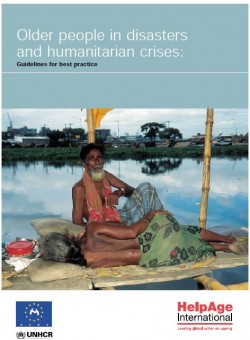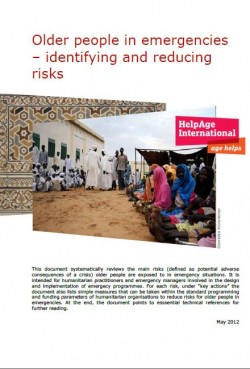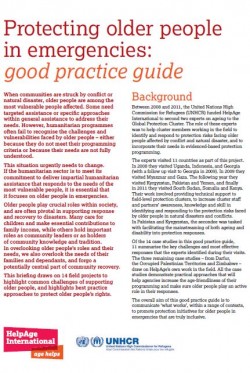Purpose
The guidelines in this document give examples of key approaches and actions that could help the humanitarian community reduce the vulnerability associated with ageing. They also suggest ways to enhance the capacities and contribution of older people in emergencies.
The guidelines also explore the wider issues relating to older people in humanitarian crises. These range from globally agreed principles of social and civil practice and global demographic changes, to the physical impact of the ageing process, common images and assumptions held about older people, the key problems they face, and the gender dimensions of their needs.
Overview
- The guidelines include: addressing older people’s needs; meeting basic needs; mobility; equal access to essential services; social, psychosocial and family needs; and recognise and support the contributions of older people.
- Sample checklists to assess older people’s needs in emergencies are shown in pp. 22-24.
Usage: Guidance for project implementation
Audiences: Technical staff
Reference: HelpAge International (2008). Older people in disaster and humanitarian crises: Guideline for best practices. Pp 1-25. Available from: http://www.helpage.org/silo/files/older-people-in-disasters-and-humanitairan-crises-guidelines-for-best-practice.pdf [Accessed: 21st September 2016]
![]()




